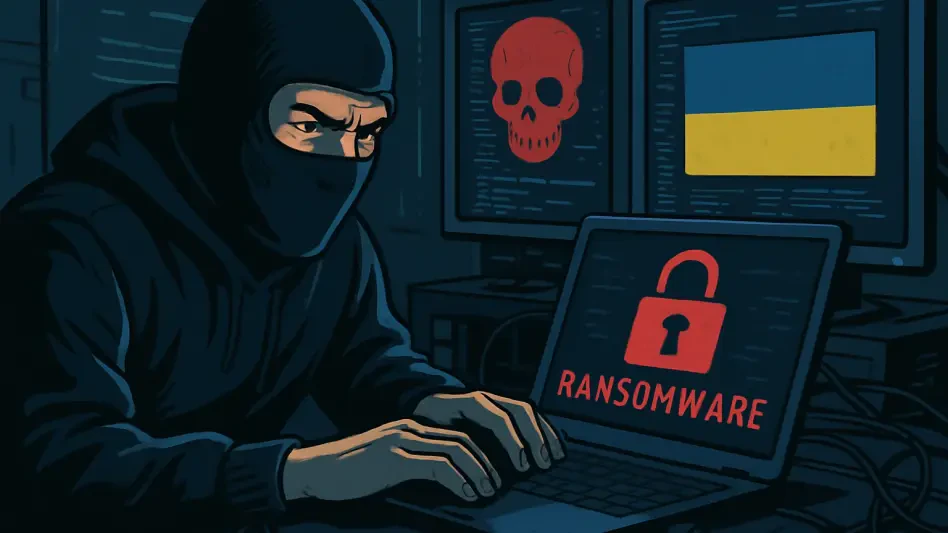In a chilling reminder of the pervasive threat posed by cybercrime, a Ukrainian national has been charged in a high-profile case that underscores the devastating impact of ransomware on global businesses, with the U.S. District Court for the Eastern District of New York recently unsealing an indictment against Volodymyr Viktorovich Tymoshchuk. He is accused of orchestrating a series of sophisticated ransomware attacks that targeted hundreds of companies worldwide. Operating under aliases like deadforz, Boba, msfv, and farnetwork, Tymoshchuk allegedly played a pivotal role in deploying destructive ransomware variants such as LockerGoga, MegaCortex, and Nefilim. This case not only highlights the audacity and technical prowess of modern cybercriminals but also showcases the relentless efforts of international law enforcement to bring them to justice. As ransomware continues to disrupt industries and economies, understanding the scope of these attacks and the responses to them becomes critical for organizations and individuals alike.
Scope and Impact of the Alleged Cyberattacks
Targeting a Global Network of Victims
The scale of the cyberattacks attributed to Tymoshchuk is staggering, with over 250 companies in the United States and hundreds more across countries like France, Germany, the Netherlands, Norway, and Switzerland falling victim to his schemes between late 2018 and mid-2021. These attacks, primarily using LockerGoga and MegaCortex ransomware, were designed to encrypt victims’ computer networks, rendering essential data inaccessible and often bringing operations to a grinding halt. What made these assaults particularly insidious was the customization of ransomware executable files for each target, ensuring that standard decryption tools were useless without the unique keys held by the attackers. This forced many businesses into a corner, where paying exorbitant ransoms seemed the only path to recovery. The severe disruptions, as noted by Acting Assistant Attorney General Matthew R. Galeotti, sometimes led to complete operational shutdowns, illustrating the profound threat ransomware poses to global commerce.
Financial and Operational Fallout
Beyond the immediate technical damage, the financial and operational consequences of Tymoshchuk’s alleged activities were immense, affecting industries across multiple continents. During the period of heightened activity with the Nefilim ransomware strain from mid-2020 to late 2021, Tymoshchuk reportedly acted as a key administrator, facilitating access for affiliates and claiming a significant 20 percent cut of the ransom payments. This hierarchical structure reveals the organized, business-like nature of these cybercriminal networks, driven by substantial monetary incentives. For the targeted organizations, the impact extended far beyond monetary losses, as encrypted systems disrupted supply chains, halted production, and eroded customer trust. The ripple effects of such attacks often lingered long after systems were restored, highlighting ransomware as not just a technological issue but a profound economic and operational challenge that demands urgent attention from businesses worldwide.
Law Enforcement Response and International Collaboration
Proactive Measures to Mitigate Damage
Law enforcement agencies have demonstrated remarkable agility in countering the ransomware threats orchestrated by Tymoshchuk and his associates, often intervening before the damage could fully materialize. In numerous cases, authorities managed to alert victims of network compromises before ransomware was deployed, preventing data encryption and thwarting extortion attempts. A landmark achievement occurred in September 2022, when an international effort resulted in the release of decryption keys for LockerGoga and MegaCortex through the “No More Ransomware Project.” This initiative empowered victims to recover their data without succumbing to ransom demands, significantly undermining the effectiveness of these ransomware variants. Such proactive measures not only provided immediate relief to affected entities but also sent a clear message to cybercriminals that their tactics would face formidable opposition from global authorities.
Building a United Front Against Cybercrime
The indictment of Tymoshchuk reflects a broader trend of enhanced international cooperation in the fight against cybercrime, with agencies from France, the Czech Republic, Germany, Lithuania, Luxembourg, the Netherlands, Norway, Switzerland, Ukraine, as well as Europol and Eurojust, pooling resources for this investigation. This collaborative approach underscores the recognition of ransomware as a transnational threat that transcends borders and requires a unified response. Additionally, the U.S. Department of State’s Transnational Organized Crime Rewards Program has put forth a reward of up to $11 million for information leading to Tymoshchuk’s arrest or conviction, incentivizing global assistance in tracking him down. Facing charges such as conspiracy to commit fraud and intentional damage to protected computers, Tymoshchuk’s case exemplifies how international partnerships are crucial in dismantling sophisticated cybercriminal networks and ensuring accountability for their actions.
Pathways to Combat Future Threats
Strengthening Cybersecurity Defenses
As the sophistication of ransomware attacks continues to evolve, organizations must prioritize robust cybersecurity measures to protect against future threats similar to those allegedly perpetrated by Tymoshchuk. The customization of ransomware executables seen in these cases highlights the need for advanced threat detection systems capable of identifying and neutralizing malicious activities before they escalate. Regular software updates, employee training on phishing and other social engineering tactics, and the implementation of multi-factor authentication are essential steps in fortifying digital defenses. Moreover, businesses should develop comprehensive incident response plans to minimize downtime and damage in the event of an attack. By investing in these proactive strategies, companies can reduce their vulnerability to ransomware and contribute to a broader culture of cyber resilience that deters criminals from exploiting technological weaknesses.
Encouraging Reporting and Global Vigilance
A critical component in combating ransomware lies in fostering a culture of vigilance and timely reporting among individuals and organizations, ensuring that incidents are documented and addressed swiftly. Channels such as direct contact with the FBI at +1-917-242-1407, emailing [email protected], or reaching out to local FBI field offices and U.S. embassies abroad provide accessible avenues for sharing information about cyber threats. These reporting mechanisms are vital for building cases against operators like Tymoshchuk and disrupting their networks before further harm is inflicted. Beyond individual action, the sustained collaboration of global law enforcement agencies remains paramount in tracking and apprehending cybercriminals. By maintaining open lines of communication and sharing intelligence, the international community can stay ahead of evolving tactics, ultimately creating a safer digital environment for all stakeholders in the years ahead.
Reflecting on a Persistent Battle
Looking back, the indictment of Volodymyr Tymoshchuk stood as a pivotal moment in the ongoing struggle against ransomware, exposing the intricate workings of cybercriminal enterprises and the extensive damage they inflicted on global businesses. The coordinated efforts of law enforcement across multiple nations, coupled with groundbreaking initiatives like the release of decryption keys, marked significant victories in curbing the impact of these attacks. Yet, the persistent nature of such threats reminded all involved of the importance of sustained vigilance and innovation in cybersecurity practices. Moving forward, the focus shifted to actionable solutions—strengthening defenses, encouraging prompt reporting, and fostering international partnerships—that promised to build a more resilient digital landscape. This case served as both a warning and a catalyst, urging stakeholders to remain proactive in addressing the ever-evolving challenges posed by cybercrime.








